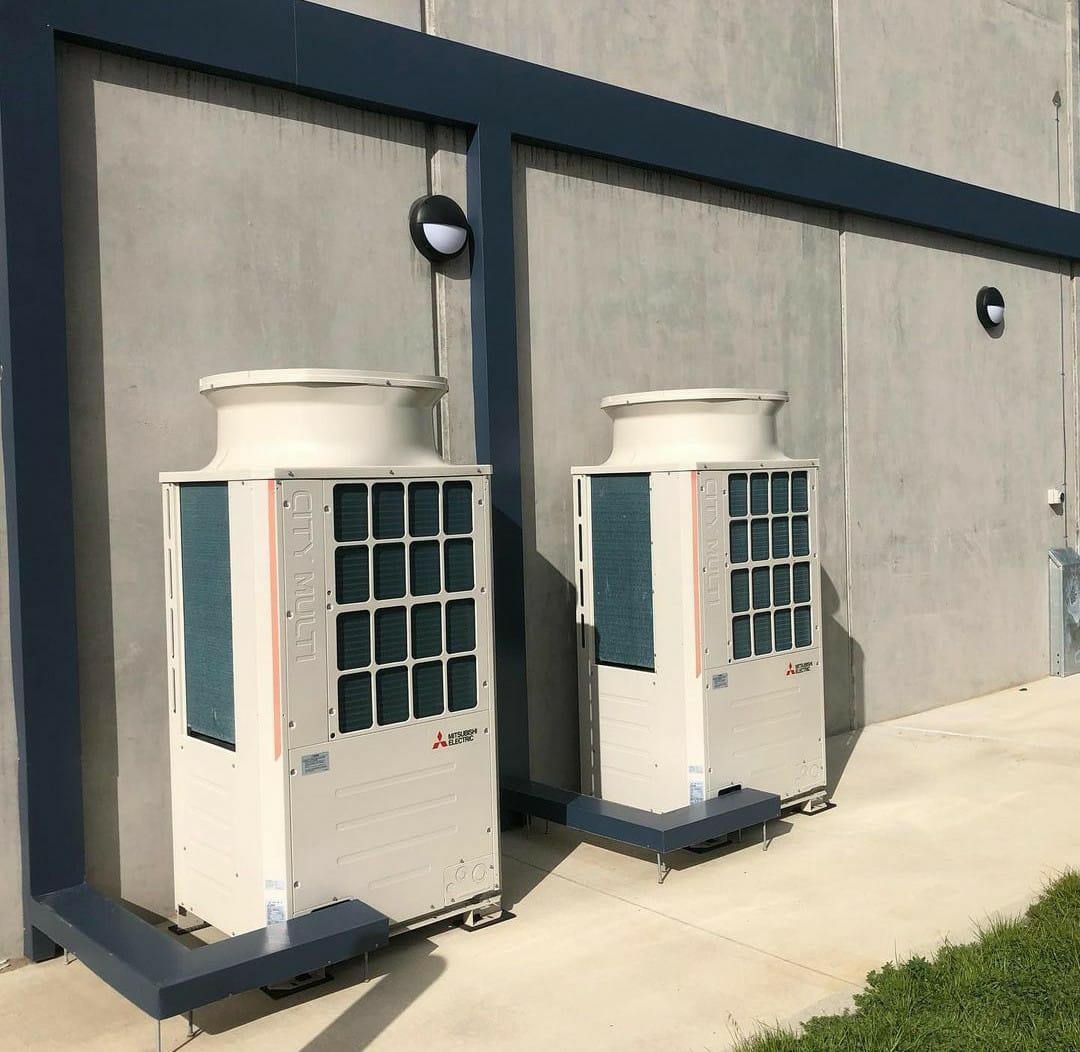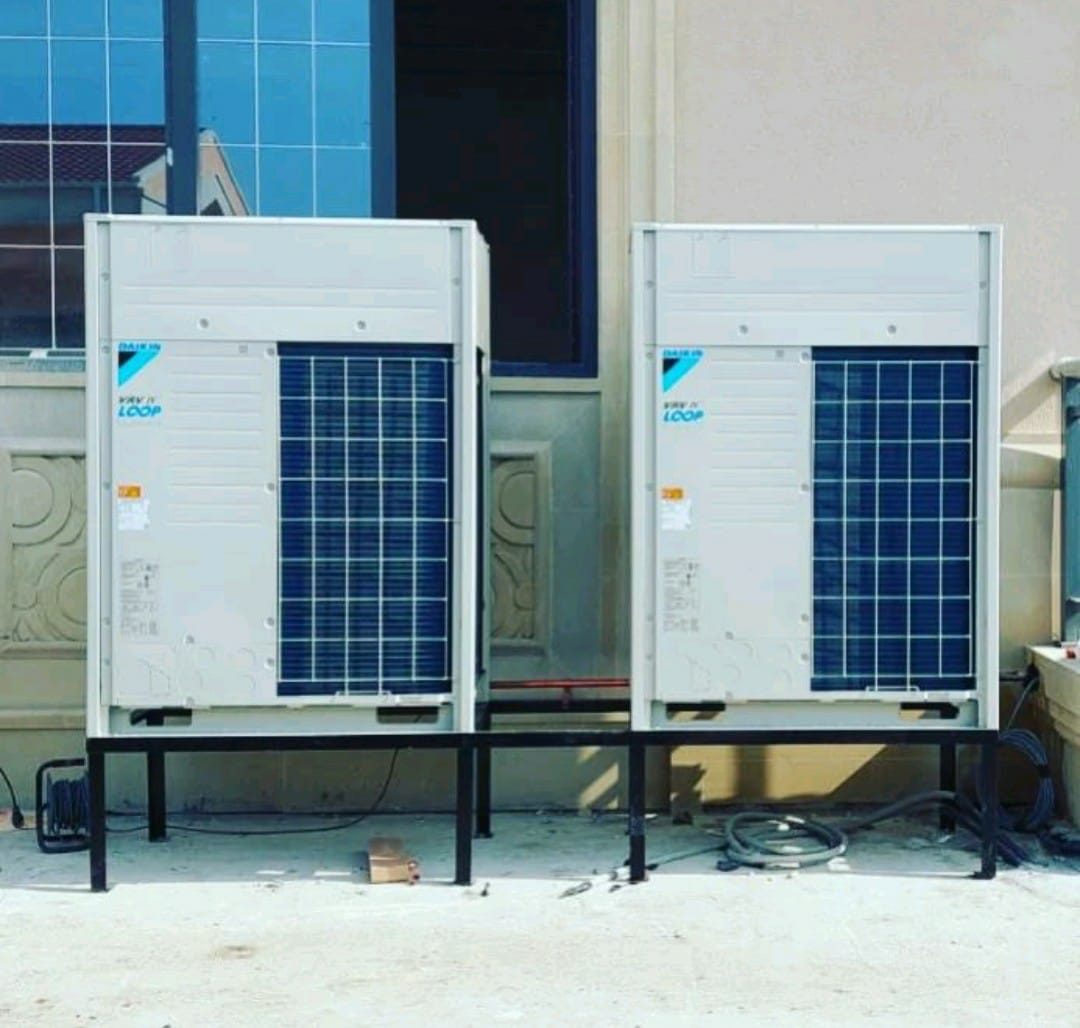


VARIABLE REFRIGERANT FLOW SYSTEMS
Variable Refrigerant Flow (VRF) systems are becoming increasingly popular in the heating and air conditioning industry. They offer a slightly higher upfront cost but provide more efficient performance, lower long-term operating costs, and reduced energy consumption compared to traditional HVAC systems. Here, we will explore the basics of Variable Refrigerant Flow systems, including how they work, their benefits, and how they compare to traditional HVAC systems. We will also discuss some tips for selecting the right VRF system for your needs.
What is a Variable Refrigerant Flow System?
A Variable Refrigerant Flow System, or VRF, is a type of air conditioning system that uses refrigerant to cool and heat a space. VRF systems are becoming more popular in both residential and commercial applications as they offer a number of advantages over traditional HVAC systems.
Some of the benefits of VRF systems include:
1. Increased efficiency – VRF systems are more energy efficient than traditional HVAC systems as they can better control the flow of refrigerant. This results in less wasted energy and lower operating costs.
2. Enhanced comfort – VRF systems provide enhanced comfort as they can maintain different temperatures in different areas of space. This is ideal for situations where someone might want the temperature to be cooler in one area (like a bedroom) and warmer in another (like a living room).
3. Greater flexibility – VRF systems are more flexible than traditional HVAC systems as they can be easily expanded or modified to meet changing needs. For example, additional indoor units can be added to a VRF system to provide cooling or heating to additional areas as needed.
How Does a Variable Refrigerant Flow System Work?
A Variable Refrigerant Flow (VRF) system is a type of air-conditioning system that can heat or cool multiple zones within a building. VRF systems use refrigerant to cool and heat air, and they are typically more energy-efficient than traditional HVAC systems. The refrigerant in VRF systems is compressed and then circulated through an outdoor unit, where it evaporates or condenses to transfer heat to or from the outdoor air. The refrigerant then flows through indoor units, where it transfers heat to or from the indoor air.
The Benefits of a Variable Refrigerant Flow System
1. A variable refrigerant flow system is a type of air conditioning system that uses a compressor to regulate the flow of refrigerant to indoor units. This allows the system to operate at peak efficiency and prevents wasted energy.
2. A variable refrigerant flow system is more efficient than a traditional fixed-speed air conditioner because it can adjust the amount of refrigerant flowing through the system to match the cooling load. This results in less energy being used overall, which lowers your utility bills.
3. In addition, a variable refrigerant flow system is more reliable than a traditional air conditioner because it doesn’t have as many moving parts. This means that there are fewer opportunities for something to go wrong, and you can enjoy peace of mind knowing that your AC unit will keep you cool all summer long.
The Different Types of Variable Refrigerant Flow Systems
There are four different types of Variable Refrigerant Flow (VRF) systems: single-split, multi-split, heat recovery, and inverter.
1. Single-Split VRF Systems: A single-split VRF system is the most basic and common type of VRF system. It consists of one outdoor unit connected to one indoor unit. The outdoor unit houses the compressor, condenser, and expansion valve. The indoor unit contains the evaporator coil and blower fan. Single-split VRF systems are best suited for small spaces or areas where only heating or cooling is needed, not both simultaneously.
2. Multi-Split VRF Systems: A multi-split VRF system is similar to a single-split system except that it consists of multiple outdoor units connected to multiple indoor units. Multi-split systems are ideal for larger spaces or areas where simultaneous heating and cooling are needed.
3. Heat Recovery VRF Systems: A heat recovery VRF system is designed to recover heat from indoors and transfer it outdoors, or vice versa. This type of system is perfect for climates where there are large temperature differences between indoors and outdoors.
4. Inverter VRF Systems: An inverter VRF system is the most advanced type of VRF system. It uses an inverter instead of a fixed-speed compressor like the other types of VRF systems. This allows the inverter VRF system to better regulate temperature and humidity levels
How to Choose the Right Variable Refrigerant Flow System for Your Home
If you’re in the market for a new HVAC system, you may be considering a variable refrigerant flow (VRF) system. VRF systems are becoming increasingly popular in residential applications, thanks to their efficient operation and versatility. But how do you know if a VRF system is right for your home?
Here are some things to consider when choosing a VRF system:
1. The size of your home. VRF systems are available in a range of sizes, so it’s important to choose one that’s properly sized for your home. If you have a large home, you’ll need a larger VRF system to heat and cool it effectively.
2. The climate in your area. If you live in an area with extreme temperatures, you’ll want to make sure your VRF system can handle the conditions. Some VRF systems are designed for specific climates, so it’s important to choose one that’s right for your area.
3. Your budget. VRF systems can vary significantly in price, so it’s important to set a budget before shopping around. Once you’ve determined how much you’re willing to spend, you can narrow down your options and find a VRF system that fits your needs and budget.
Conclusion
Variable refrigerant flow systems are an efficient and cost-effective way to cool your home or business. They are also easy to install, maintain, and use. They offer the flexibility of zoning cooling in multiple areas with different temperature requirements, as well as the ability to save energy by only running what is necessary at any given time. Overall, they provide a great solution for providing comfortable temperatures while saving on energy costs.

Leave A Comment